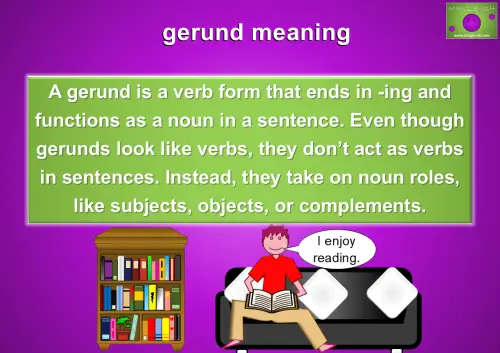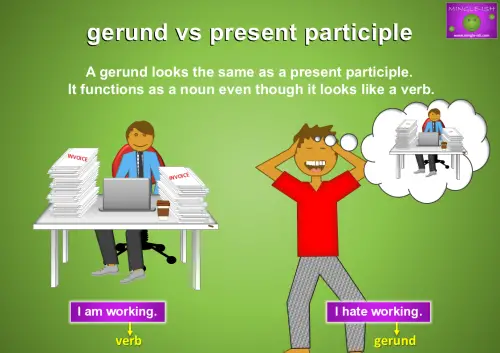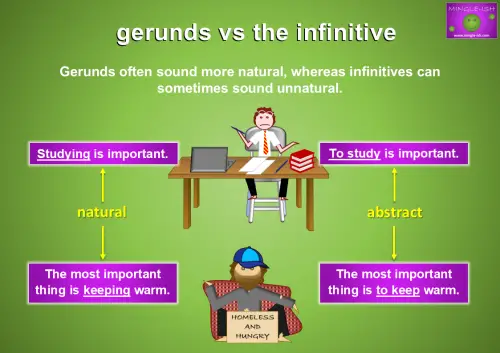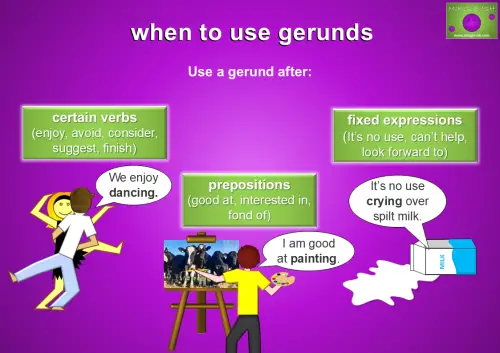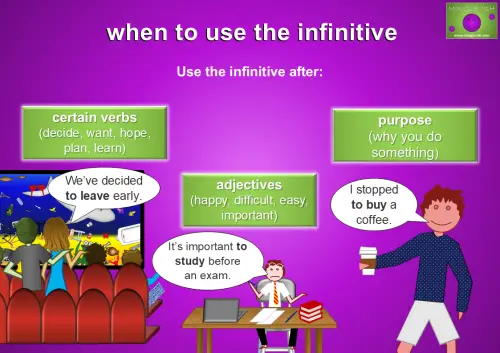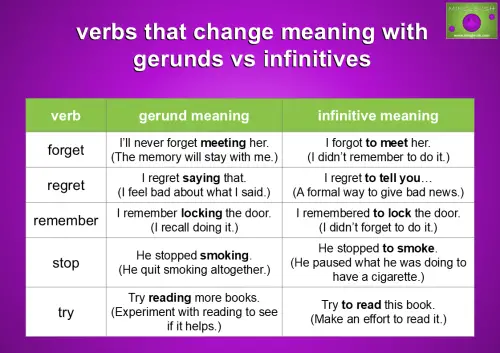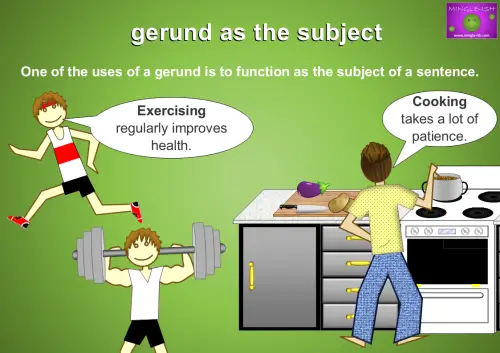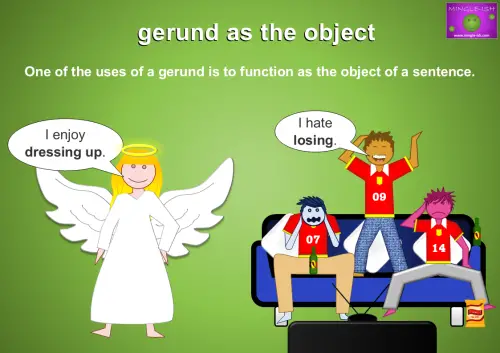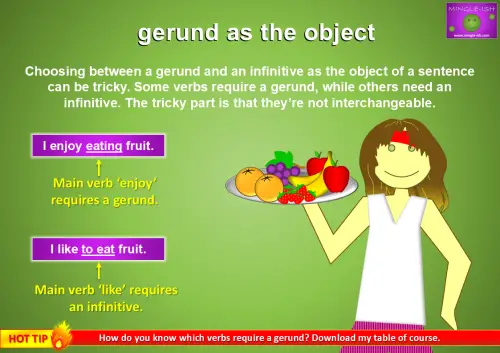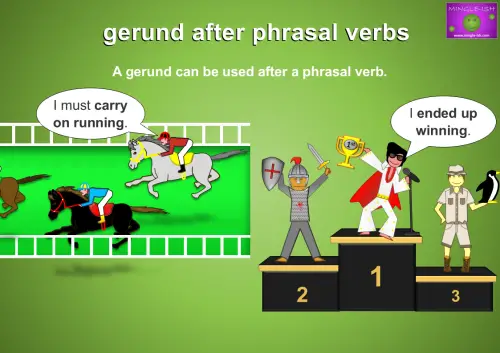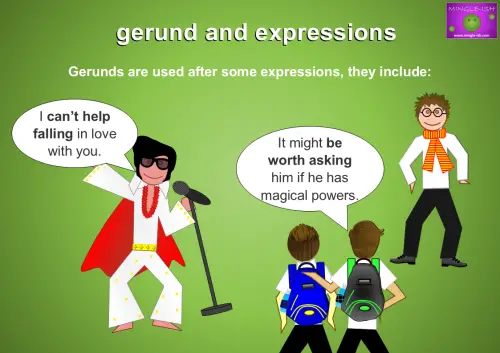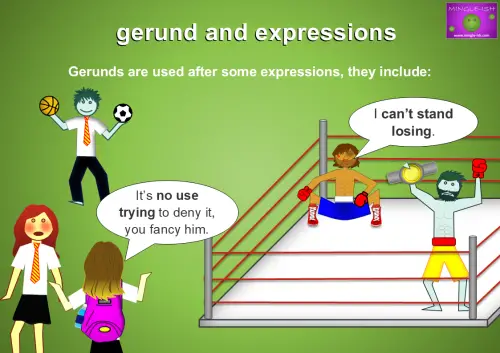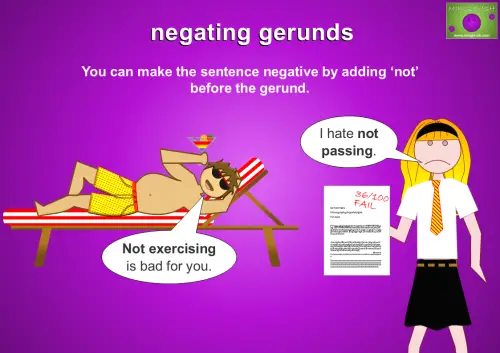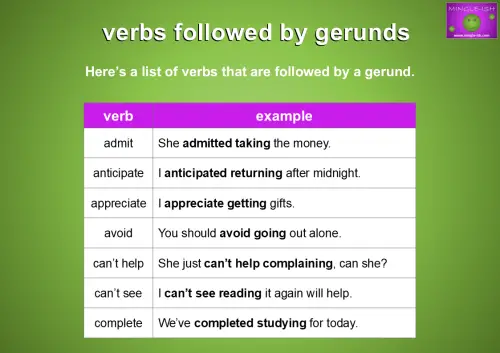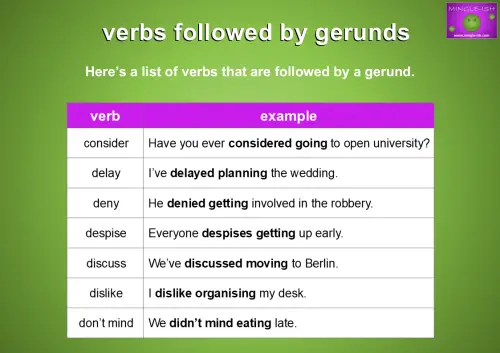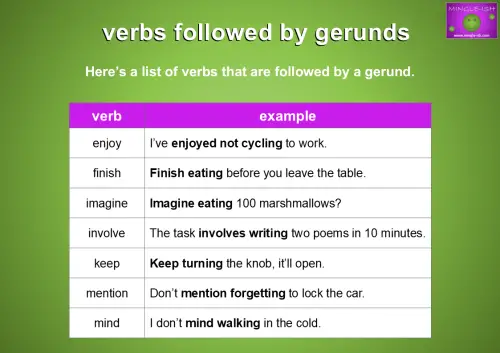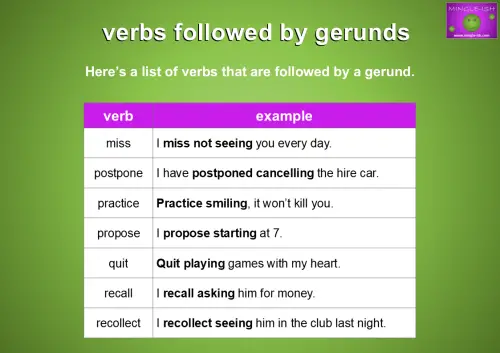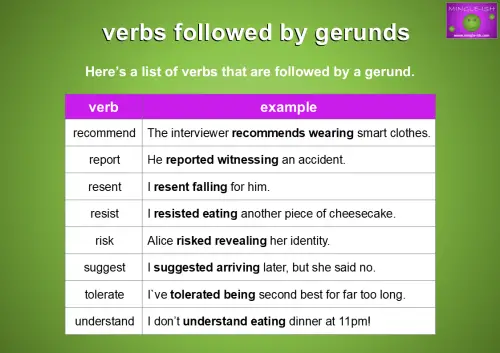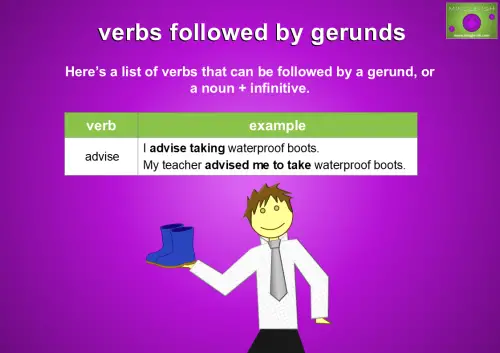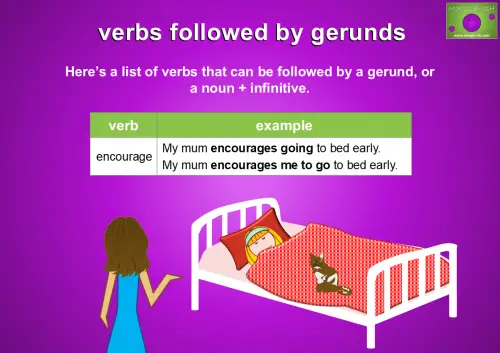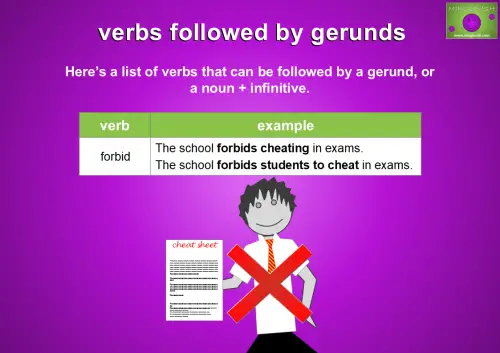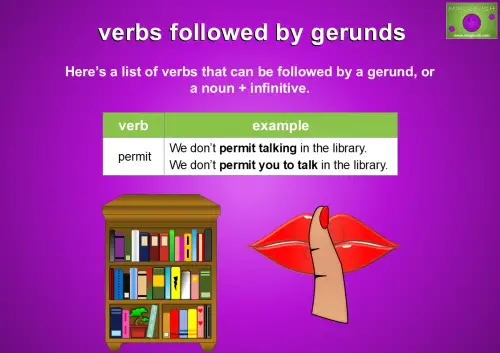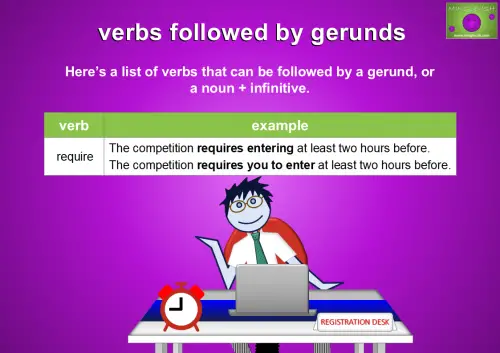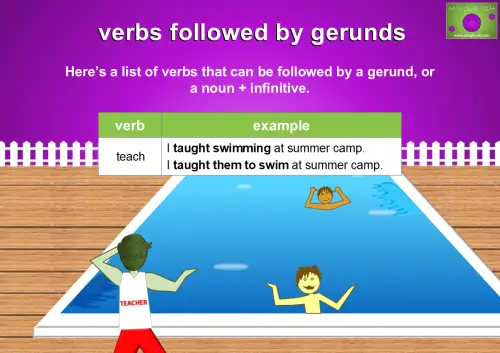Contents
Gerunds pop up everywhere in English, from casual chats to formal writing. Whether you’re talking about hobbies, plans, or everyday activities, knowing how to use them makes your English sound more natural.
This guide breaks it all down with easy explanations, plenty of examples, and common mistakes to avoid.
What is a gerund?
A gerund is probably something you have heard of or used without realising it.
Let’s begin with a quick overview. Gerunds are formed from verbs but function as nouns. You can easily identify them by their ‘verb + ing’ form. They look identical to the present participle, but gerunds are more common in everyday speech and help you sound more natural.
Gerunds vs Present Participles
Gerunds and present participles may look identical because both end in -ing, but they serve different purposes in a sentence.
- Gerunds function as nouns. They can be subjects, objects, or complements.
- Present participles function as verbs or adjectives. They are used in continuous tenses or to describe nouns.
Here’s a side-by-side comparison:
| Gerund (Noun) | Present Participle (Verb/Adjective) |
|---|---|
| Swimming is good exercise. (subject) | She is swimming in the pool. (continuous tense) |
| I enjoy reading. (object) | The reading boy looks focused. (adjective) |
| He’s interested in painting. (object of preposition) | The girl, painting by the window, looks relaxed. (descriptive participle phrase) |
A quick trick to check: If the -ing word acts like a thing (a noun), it’s a gerund. If it describes an action or modifies a noun, it’s a present participle.
gerund vs infinitive
Gerunds (verb + ing) and infinitives (to + base verb) can both act as nouns, but they are used in different ways. Some verbs are followed only by gerunds, some only by infinitives, and others can take both with a change in meaning.
When to Use Gerunds
Use a gerund after:
-
Certain verbs (enjoy, avoid, consider, suggest, finish) → She enjoys dancing.
-
Prepositions (good at, interested in, fond of) → He is good at drawing.
-
Fixed expressions (It’s no use, can’t help, look forward to) → It’s no use crying over spilt milk.
When to Use Infinitives
Use an infinitive after:
-
Certain verbs (decide, want, hope, plan, learn) → They decided to leave early.
-
Adjectives (happy, difficult, easy, important) → It’s important to study before an exam.
-
Purpose (why you do something) → He stopped to buy a coffee.
Verbs That Change Meaning with Gerunds vs Infinitives
Understanding how certain verbs change meaning depending on whether they are followed by a gerund or an infinitive is key to mastering their correct usage in English.
To see clear examples of these verbs in action, take a look at the table below.
| Verb | Gerund Meaning | Infinitive Meaning |
|---|---|---|
| forget | I regret saying that. (I feel bad about what I said.) |
I forgot to meet her. (I didn’t remember to do it.) |
| regret | I’ll never forget meeting her. (The memory will stay with me.) |
I regret to tell you… (A formal way to give bad news.) |
| remember | I remember locking the door. (I recall doing it.) |
I remembered to lock the door. (I didn’t forget to do it.) |
| stop | He stopped smoking. (He quit smoking altogether.) |
He stopped to smoke. (He paused what he was doing to have a cigarette.) |
| try | Try reading more books. (Experiment with reading to see if it helps.) |
Try to read this book. (Make an effort to read it.) |
gerund as the subject, object or complement
Gerunds can do a few different jobs in a sentence, like acting as the subject, object, or complement. Getting the hang of these roles will make using gerunds a lot easier. Below, you’ll find some examples to show how they work in each case.
gerund as the subject
A gerund can act as the subject of a sentence, meaning it’s the main thing the sentence is about. When a gerund is the subject, it usually refers to an activity or action.
For example:
-
Swimming is great exercise.
-
Reading helps improve vocabulary.
-
Jogging keeps me fit.
In these examples, ‘swimming,’ ‘reading,’ and ‘jogging’ are all gerunds acting as the subject of the sentence. They each describe an activity that the sentence focuses on.
gerund as the object
A gerund can also function as the object of a verb, meaning it receives the action of the verb. When a gerund acts as the object, it refers to an action or activity that is being done. For example:
-
I enjoy reading books.
-
She loves cooking new recipes.
-
They dislike working late.
In these examples, the gerunds ‘reading,’ ‘cooking,’ and ‘working’ are the objects of the verbs enjoy, love, and dislike, respectively. They show the actions or activities that are being liked, loved, or disliked.
gerund as a complement
A gerund can also be used as a complement in a sentence. This means it follows a linking verb (like be) and gives more information about the subject. It helps explain what the subject is or does.
For example:
-
Her favourite hobby is painting.
-
My job is teaching.
-
The hardest part was waiting.
In these sentences, the gerunds ‘painting,’ ‘teaching,’ and ‘waiting’ act as complements. They describe or define the subject more clearly.
more functions of a gerund
Gerunds don’t just act as subjects, objects, or complements—they can play a few other roles in a sentence too. Let’s take a look at some more ways gerunds are used.
gerund after phrasal verbs
Gerunds are often used after phrasal verbs, which are phrases made up of a verb plus a preposition or adverb (like give up or look forward to). When a phrasal verb is followed by another action, that action is usually in gerund form. For example:
-
She gave up smoking.
-
I look forward to meeting you.
-
They ended up leaving early.
-
He kept on talking.
-
We talked about moving abroad.
In each case, the gerund follows the phrasal verb and describes the action related to it.
gerund after prepositions
The gerund is almost always used after a preposition. This includes prepositions that come after verbs, adjectives, and nouns. It’s one of the golden rules in English grammar! For example:
-
She’s good at drawing.
-
I’m interested in learning Spanish.
-
They left without saying goodbye.
-
We talked about going on holiday.
-
He’s tired of working late.
In each sentence, the gerund (drawing, learning, saying, going, working) follows a preposition and describes an activity. Just remember: if a verb comes right after a preposition, it should be in gerund form.
gerund and compound nouns
Gerunds are often used to form compound nouns – that’s when two words are joined together to create a new noun. In these cases, the gerund usually comes first and describes the purpose or use of the second word. For example:
-
Swimming pool – a pool used for swimming
-
Shopping bag – a bag for carrying your shopping
-
Running shoes – shoes designed for running
-
Writing desk – a desk used for writing
-
Cooking class – a class where you learn cooking
These compound nouns are common in everyday English, and the gerund helps make it clear what the item is for. It’s a handy way to describe objects or places related to specific activities.
gerund and expressions
Gerunds are often used in fixed expressions, especially after certain phrases that are commonly followed by verbs ending in -ing. These expressions are a natural part of everyday English and are worth remembering.
For example:
-
It’s no use complaining.
-
There’s no point in arguing.
-
I can’t help laughing.
-
I’m busy studying.
-
It’s worth checking again.
In each of these expressions, the gerund makes the phrase complete and meaningful. Learning these as set phrases can make your English sound much more natural.
How to Make a Gerund Negative
To make a gerund negative, simply add ‘not’ before the gerund. This is the easiest way to turn a gerund into its negative form.
For example:
-
I enjoy not working on weekends.
-
She avoids not listening to instructions.
-
They regret not going on the trip.
-
He keeps complaining about not getting enough sleep.
In these sentences, not is placed directly before the gerund (working, listening, going, getting) to show that the action is negative. Remember, this structure is used for expressing a lack of enjoyment, avoidance, regret, or other negative feelings related to the action.
verbs + gerund list
Some verbs in English are always followed by a gerund (a verb ending in -ing). You can’t use the infinitive with these verbs, so it’s a good idea to memorise them. Do you like bedtime reading? This table should keep you busy for a while. Check out the list below to see which verbs always take a gerund.
verbs followed by a gerund, or a noun + infinitive
Some verbs can be followed by either a gerund or a noun + infinitive, but the structure changes slightly depending on how you use them. Check out the list below with examples to help you get the hang of it
advise
example with gerund – I advise taking waterproof boots.
example with noun + infinitive – My teacher advised me to take waterproof boots.
allow
example with gerund – We allow drinking your own alcohol.
example with noun + infinitive – We allow you to drink your own alcohol.
encourage
example with gerund – My mum encourages going to bed early.
example with noun + infinitive – My mum encourages me to go to bed early.
forbid
example with gerund – The school forbids cheating in exams.
example with noun + infinitive – The school forbids students to cheat in exams.
permit
example with gerund – We don’t permit talking in the library.
example with noun + infinitive – We don’t permit you to talk in the library.
require
example with gerund – The competition requires entering at least two hours before.
example with noun + infinitive – The competition requires you to enter at least two hours before.
teach
example with gerund – I taught swimming at summer camp.
example with noun + infinitive – I taught them to swim at summer camp.
teach
example with gerund – They urge recycling at my work.
example with noun + infinitive – They urge us to recycle at work.
You can download the table by clicking the link below.
Gerunds are just one of many important grammar topics that can help you sound more natural in English.
If you enjoyed this page and want to keep improving, check out our grammar section, which includes verb tenses, sentence structure, passive voice, and much more. The more you learn, the more confident you’ll become in your speaking and writing!
